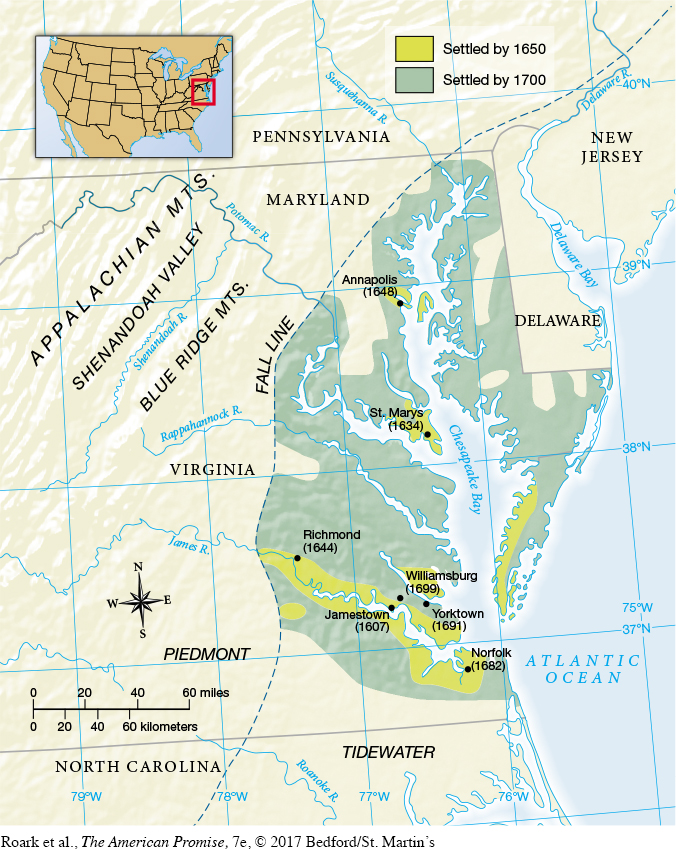Tobacco grew wild in the New World, and Native Americans used it for thousands of years before Europeans arrived. Many sixteenth-century European explorers noticed the Indians’ habit of “drinking smoke.” During the sixteenth century, tobacco was an expensive luxury used sparingly by a few in Europe. During the next century, English colonists in North America sent so much tobacco to European markets that it became an affordable indulgence used often by many people. (See “Beyond America’s Borders: American Tobacco and European Consumers.”)
By 1700, nearly 100,000 colonists lived in the Chesapeake region, encompassing Virginia, Maryland, and northern North Carolina (Map 3.1). Although they differed in wealth, landholding, access to labor, and religion, they shared a dedication to growing tobacco. They exported more than 35 million pounds of tobacco in 1700, a fivefold increase in per capita production since 1620. Chesapeake colonists mastered the demands of tobacco agriculture, and the “Stinkinge Weede” (a seventeenth-century Marylander’s term for tobacco) also mastered the colonists. Settlers lived by the rhythms of tobacco agriculture, and their endless need for labor attracted droves of English indentured servants to grueling work in tobacco fields.

MAP ACTIVITYMap 3.1 Chesapeake Colonies in the Seventeenth Century This map illustrates the intimate association between land and water in the settlement of the Chesapeake in the seventeenth century. The fall line indicates the limit of navigable water, where rapids and falls prevented travel farther upstream.READING THE MAP: Using the notations on the map, create a chronology of the establishment of towns and settlements. What physical features correspond to the earliest habitation by English settlers?CONNECTIONS: Why was access to navigable water so important? Given the settlers’ need for defense against native tribes, what explains the distance between settlements?
